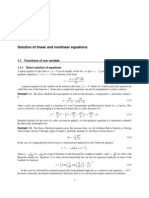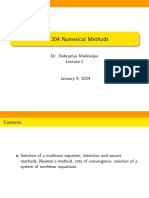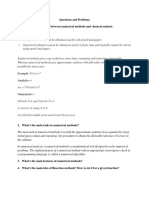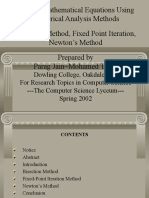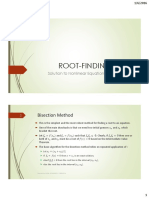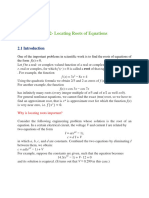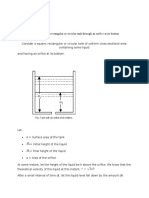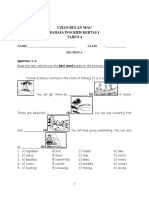0% found this document useful (0 votes)
44 views18 pagesSolving Nonlinear Equations in MATLAB
This document discusses solving non-linear equations using MATLAB. It covers topics like linear vs non-linear equations, solving equations with one variable, and numerical methods like bisection, Newton-Raphson. It provides an example of finding the root of x^2 - 2 = 0 using bisection, Newton-Raphson methods. It also discusses the fzero command in MATLAB to find zeros of non-linear functions.
Uploaded by
amitCopyright
© © All Rights Reserved
We take content rights seriously. If you suspect this is your content, claim it here.
Available Formats
Download as PDF, TXT or read online on Scribd
0% found this document useful (0 votes)
44 views18 pagesSolving Nonlinear Equations in MATLAB
This document discusses solving non-linear equations using MATLAB. It covers topics like linear vs non-linear equations, solving equations with one variable, and numerical methods like bisection, Newton-Raphson. It provides an example of finding the root of x^2 - 2 = 0 using bisection, Newton-Raphson methods. It also discusses the fzero command in MATLAB to find zeros of non-linear functions.
Uploaded by
amitCopyright
© © All Rights Reserved
We take content rights seriously. If you suspect this is your content, claim it here.
Available Formats
Download as PDF, TXT or read online on Scribd
/ 18








